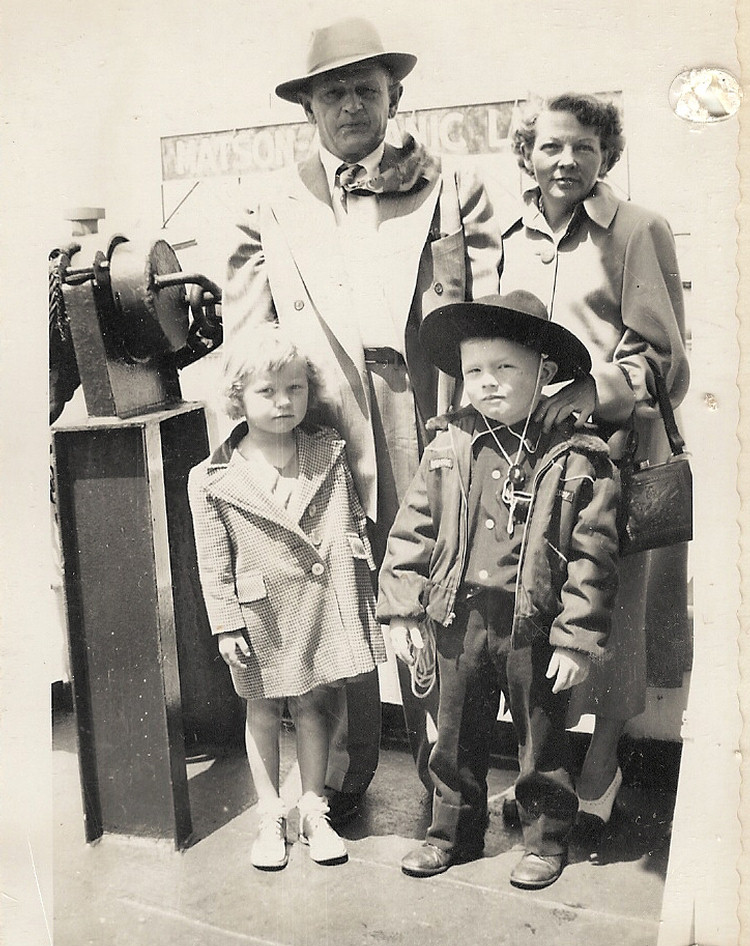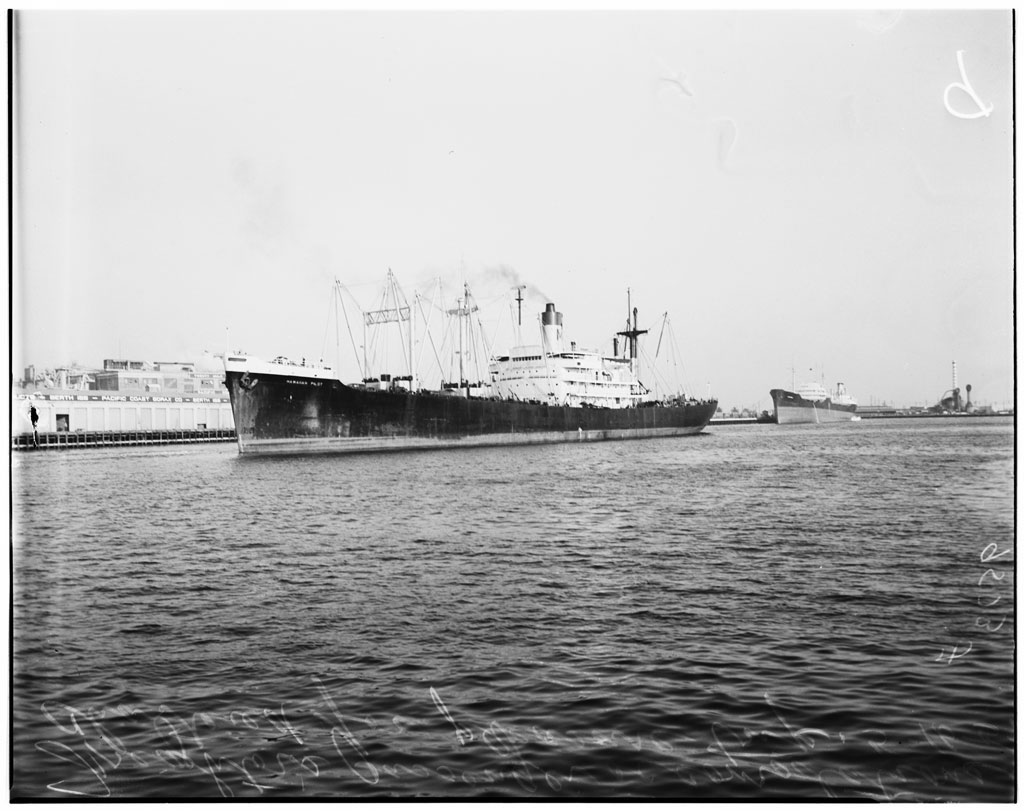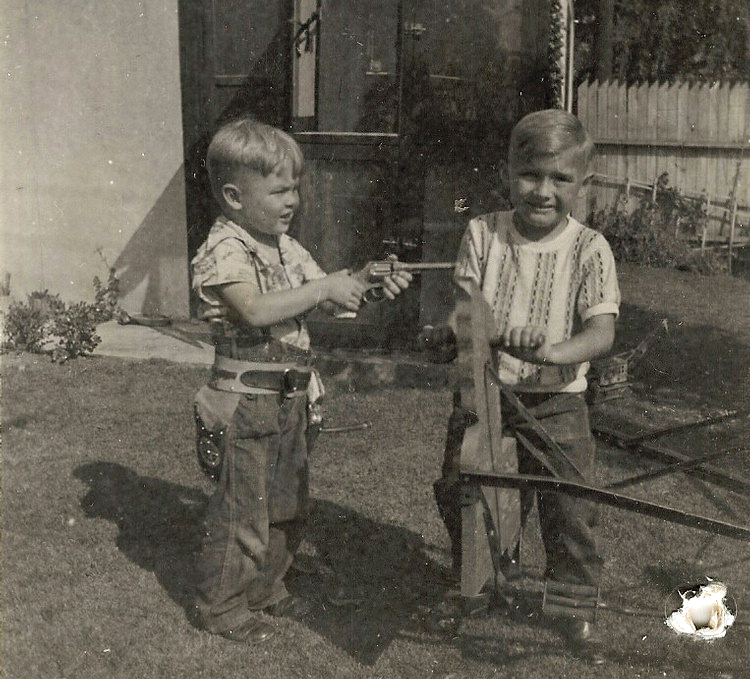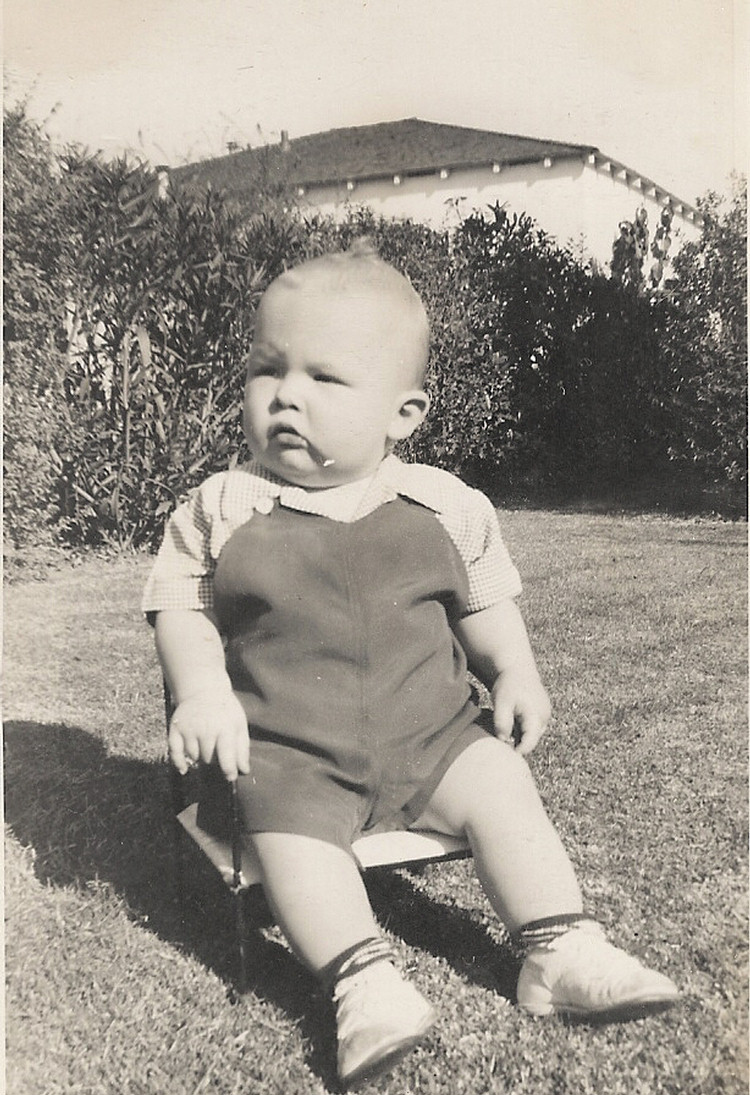Snap Shots From Almost Seventy Years Ago

PAul Senior leaves for Hawaii oin the Hawaiian Pilot
about 1951

Did You Know? - The construction of the so-called C-3 cargo vessels began during World War II, after the famous "Liberty" and "Victory" ships. This standardized type of ship overtook all other ships as it was more modern and longer and could also reach a higher speed. After the Second World War these ships were converted into ordinary freighters and sold to various shipping companies. The Hawaiian Pilot was built in 1944 and first went into service as the USS Burleigh. After the war ended it was acquired and refitted by the Matson Navigation Company and mainly travelled the Los Angeles, San Francisco and Hawaii routes. The cargo consisted of normal consumer goods of all kinds and agrarian products primarily bound for the West Coast of the USA. The vessel had a cruising speed of 16.5 knots and a total cargo capacity of 12,500 tonnes.
Jacob Luckenbach's history began back in 1944 as the C3 cargo ship Sea Robin. The United States was at war and in need of vessels to transport troops and cargo to foreign ports to support the war effort. Sea Robin's keel was laid on 01 October 1943 later being launched on 29 February 1944 at the Ingalls Shipbuilding Corp at Pascagoula, Mississippi. The steamship was assigned hull No. 411. Just four months earlier the USS Burleigh (APA-95), assigned hull No. 406 slipped down the ways at the Ingalls shipyard in Pascagoula. The combat loaded transport USS Burleigh went on to receive one battle star for her service in WWII and was later sold to Matson Navigation Co. in 1947 and renamed Hawaiian Pilot. Before being sold off to Oceanic Steamship Company in 1961 and renamed Sonoma, and later to Pacific Far East Lines in 1970, she would meet for one last time with her sister ship Jacob Luckenbach off the Golden Gate near San Francisco.
After the famous „Liberty“ and „Victory“ ships, all built during World War 2, the C-3 freighter came. The C 3 types surpassed all other World War 2 standard ships because they were larger, had a higher speed and were in fact better than the “Liberty” and “Victory” ships. The C3-types were subdivided in 24 different ver- sions, for instance C3-E, C3-A-P&C(S) and more. A number of C3s were built as aircraft carrier (the C3-S-A2 type) the so-called „baby flattops“, but after World War 2 the flattops were rebuilt into cargo ships and sold to other countries. Several shipping companies in Europe bought those ships enabling them to resume their trade.
The Hawaiian Pilot, a C-3 Class freighter, was built by the Ingalls Shipbuilding Corporation of Pascagoula, Mississippi, in 1944. She was launched as the Burleigh, and during the late stages of World War II she served as a Naval Command ship in the Pacific area.
At the close of the War she was purchased by The Matson Navigation Company and reconverted into a cargo carrying freighter, and was in service on the run between Los Angeles, San Francisco and the various ports of the Hawaiin Islands. When she was outbound to the Islands her cargo was different; new cars, food, clothing, construction materials, livestock, in fact it carries all of the things need- ed to maintain a high standard of living in a modern community of 500.000 peo- ple. The Matson Freighters were literally floating warehouses for the people of Hawaii. On the trip back she was loaded with a variety of Island products, includ- ing coffee, nuts, sugar, pineaple and molasses. The Pilot had a normal capacity of 8.000 tons of bulk raw sugar, and 2.500 tons of molasses.
The C-3 class freighters had a top speed of 18 knots, and a cruising speed of 16.5 knots. Its total cargo capacity was 12.500 tons and there were accommodations for 12 passengers in modern, roomy cabins. Thirteen licensed officers and 38 men complete the crew. The Pilot had a total fuel capacity of 23.000 barrels of oil, and had 60.000 cubic feet of refrigerated space which could carry a cargo at temperatures as low as – 10 degrees. She was equipped with radar, radio tele- fone and all of the modern navigational aids. It was been estimated that, since the Hawaiian Pilot was in MATSON service, she run a half million miles in the Pacific.

Yes... I had a merry-go-round in my back yard
. Playing with cousin Tom Hale

Hansome devil!